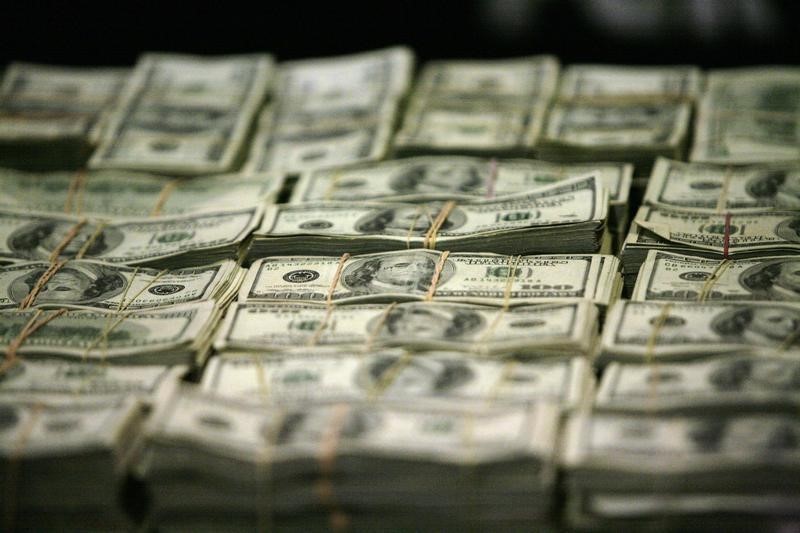Investing.com - The dollar trimmed losses against the other major currencies on Thursday, as markets digested remarks by European Central Bank President Mario Draghi and a mixed bag of U.S. economic reports.
EUR/USD fell 0.17% to 1.1279, after hitting highs of 1.1399 earlier in the day.
The euro pulled back from session highs after ECB President Draghi said the bank stands ready to use “all instruments available,” including further interest rate cuts to ensure the inflation rate returns to its target.
Draghi also said that the risks to the euro zone economy remain “tilted to the downside” and warned that inflation could turn negative again in the coming months. But he added that the ECB is still confident that inflation will rise back toward its target of just below 2%.
The comments came after the ECB held the benchmark interest rate at a record low zero, in a widely anticipated decision.
USD/JPY slid 0.29% to 109.52.
Also Thursday, the U.S. Department of Labor said the number of individuals filing for initial jobless benefits in the week ending April 16 decreased by 6,000 to 24,000 from the previous week’s total of 253,000. Analysts had expected jobless claims to rise by 10,000 to 263,000 last week.
Separately, the Federal Reserve Bank of Philadelphia said its manufacturing index fell to -1.6 this month from March’s reading of 12.4. Economists had expected a more modest decline to 8.9.
Meanwhile, the dollar was steady against the pound, with GBP/USD at 1.4329 and edged higher against the Swiss franc, with USD/CHF up 0.12% to 0.9738.
The U.K. Office for National Statistics reported on Thursday that retail sales fell 1.3% in March, compared to expectations for a 0.1% slip. Year-on-year, retail sales increased 2.7%, compared to expectations for a 4.4% rise.
Core retail sales, which exclude automobile sales, fell 1.6% on the month, compared to expectations for a 0.4% fall.
A separate report showed that U.K. public sector net borrowing rose by £4.16 billion in March after an increase of £6.49 billion the previous month. Analysts had expected public sector net borrowing to rise by £5.50 billion last month.
The Australian and New Zealand dollars turned lower, with AUD/USD down 0.31% at 0.7770 and with NZD/USD dropping 0.56% to 0.6937.
Elsewhere, USD/CAD rose 0.32% to 1.2696, easing off the previous session’s nine-month low of 1.2594.
The commodity-currencies strengthened earlier, as oil prices rose to their highest level since November after the International Energy Agency said 2016 would see the biggest fall in non-OPEC production in a generation.
The U.S. dollar index, which measures the greenback’s strength against a trade-weighted basket of six major currencies, was little changed at 94.59, off lows of 93.87 reached earlier in the session.
